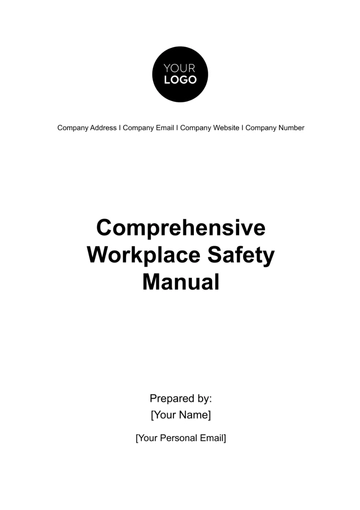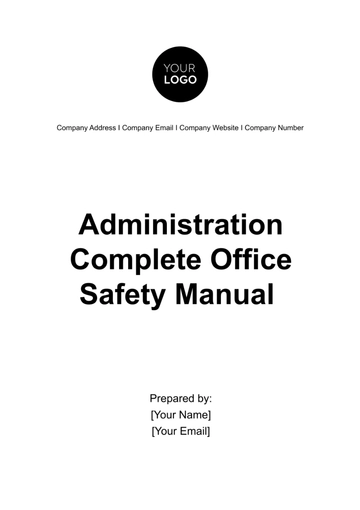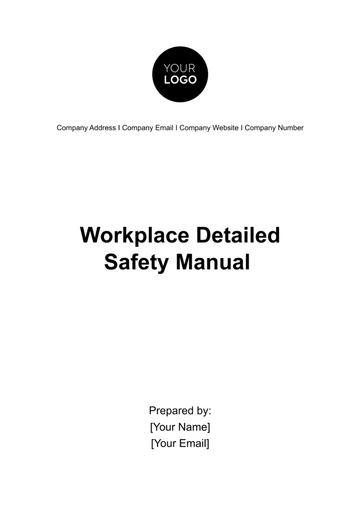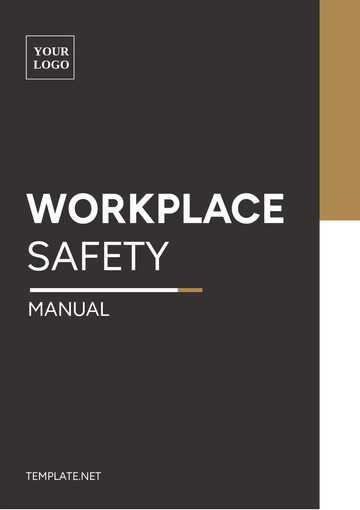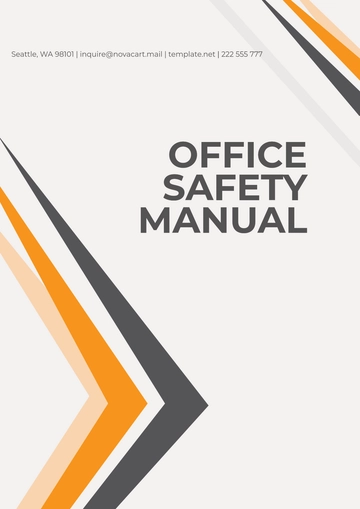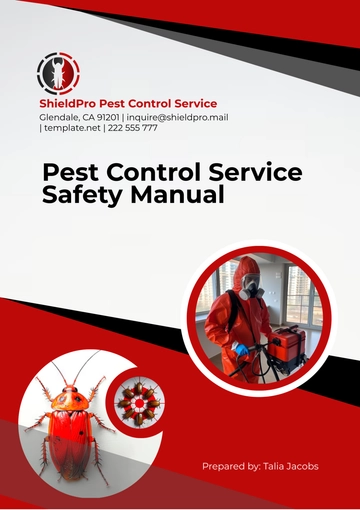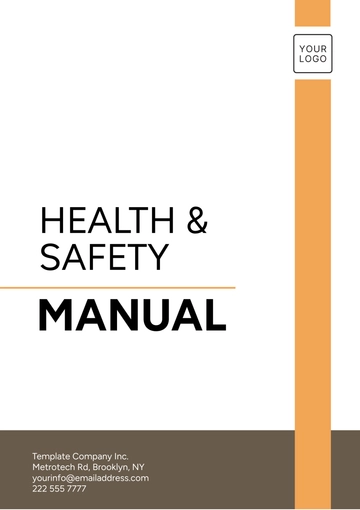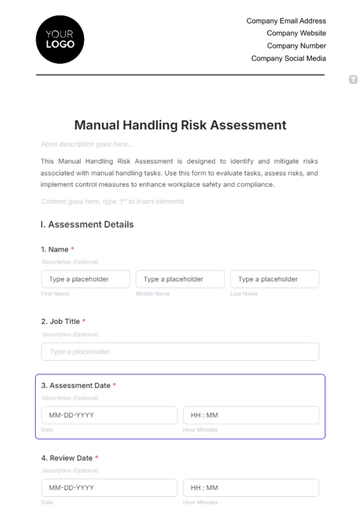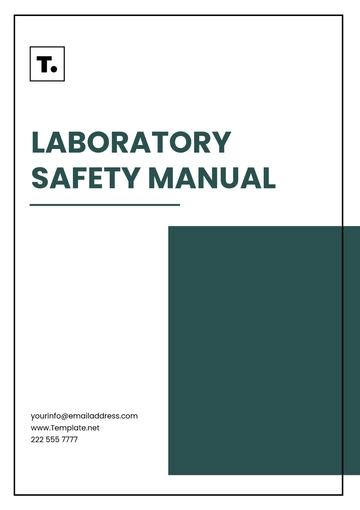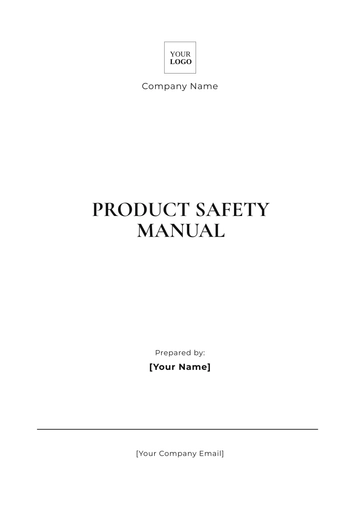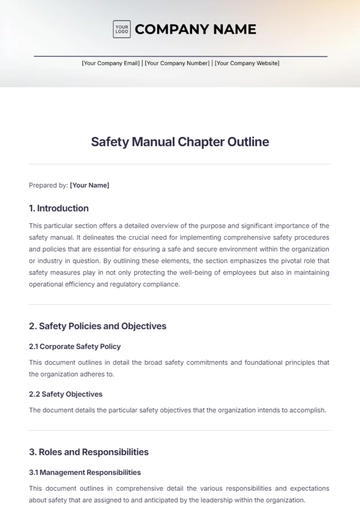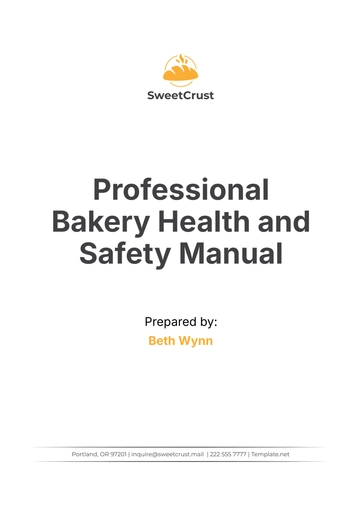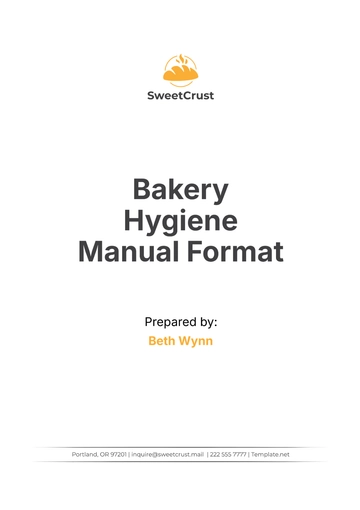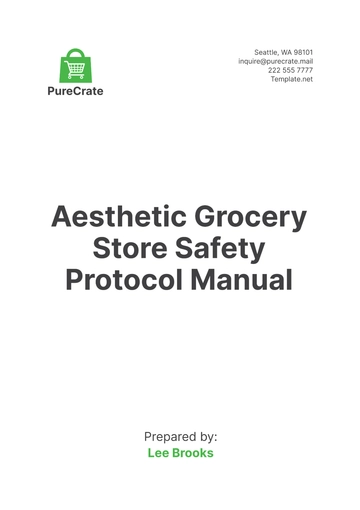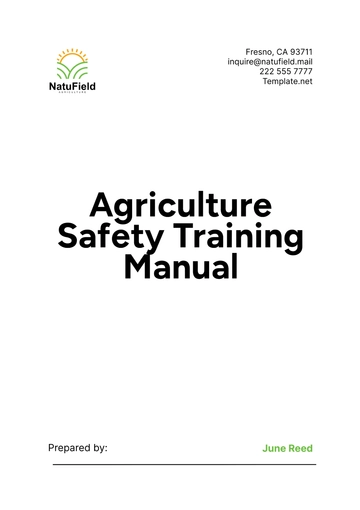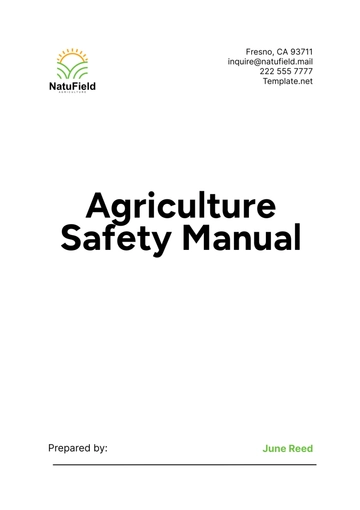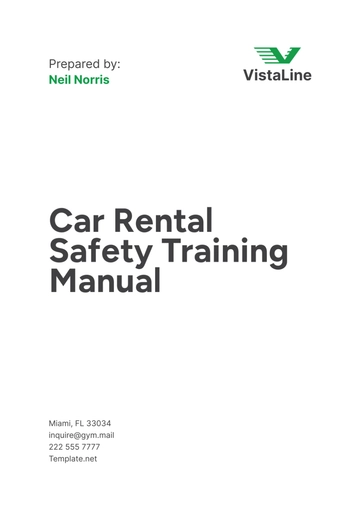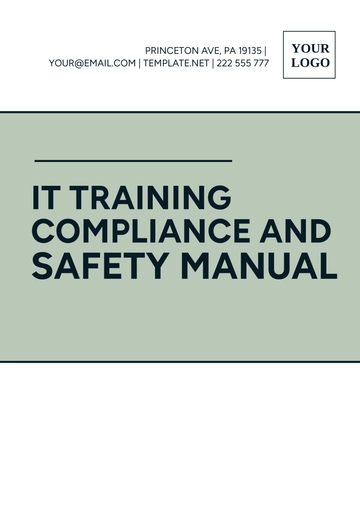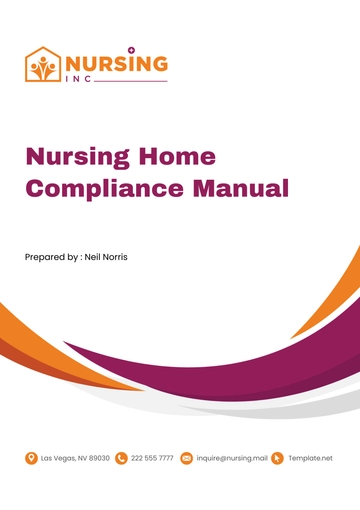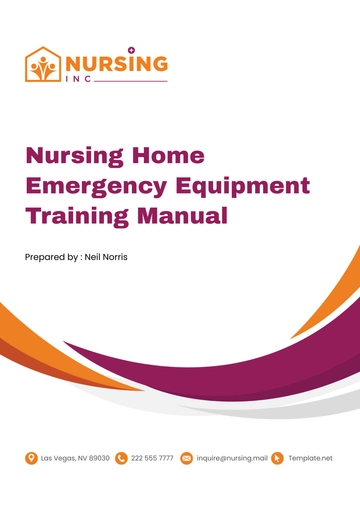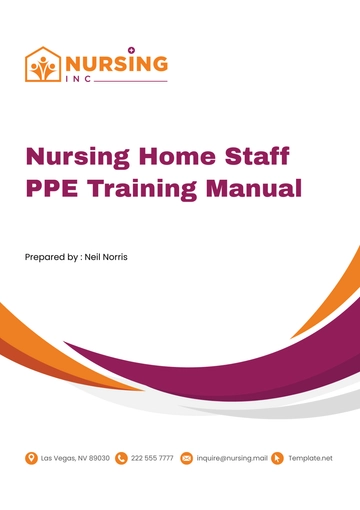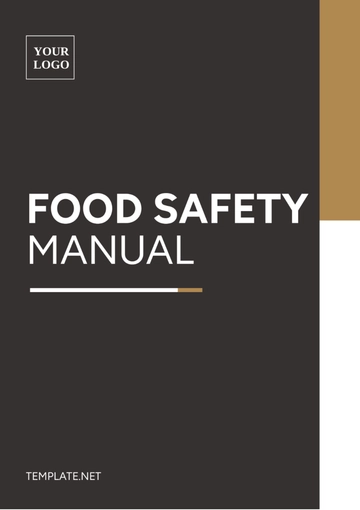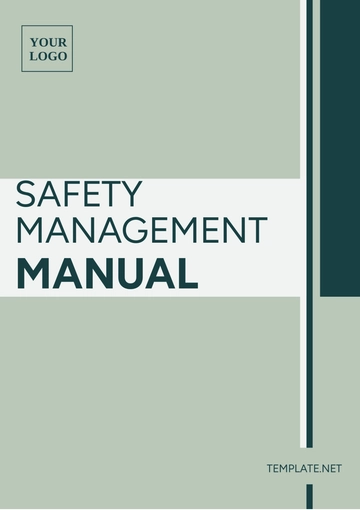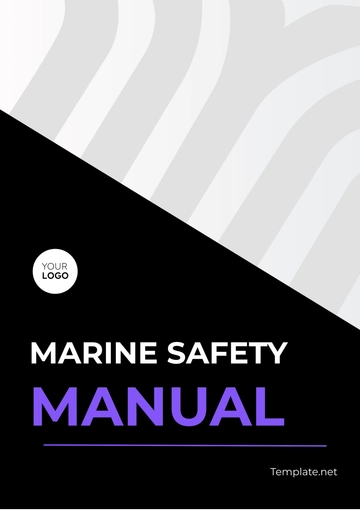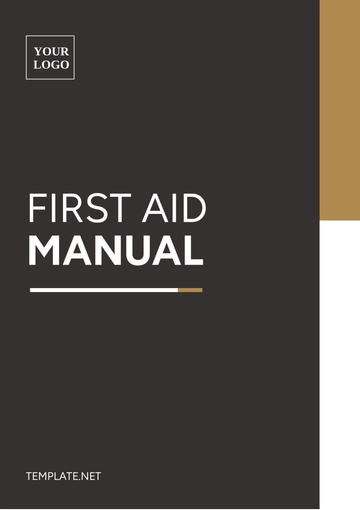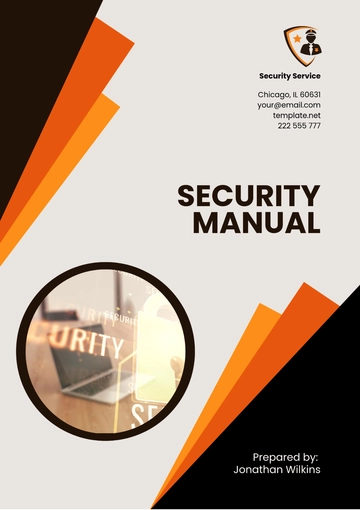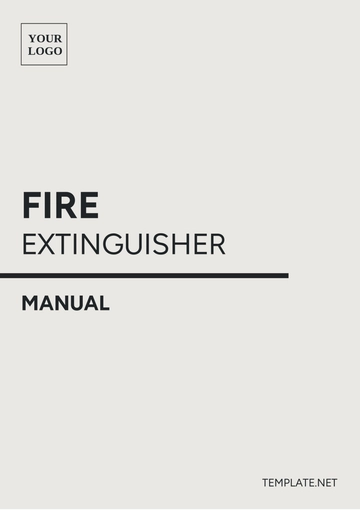Free Cleaning Services Workplace Health & Safety Orientation Manual
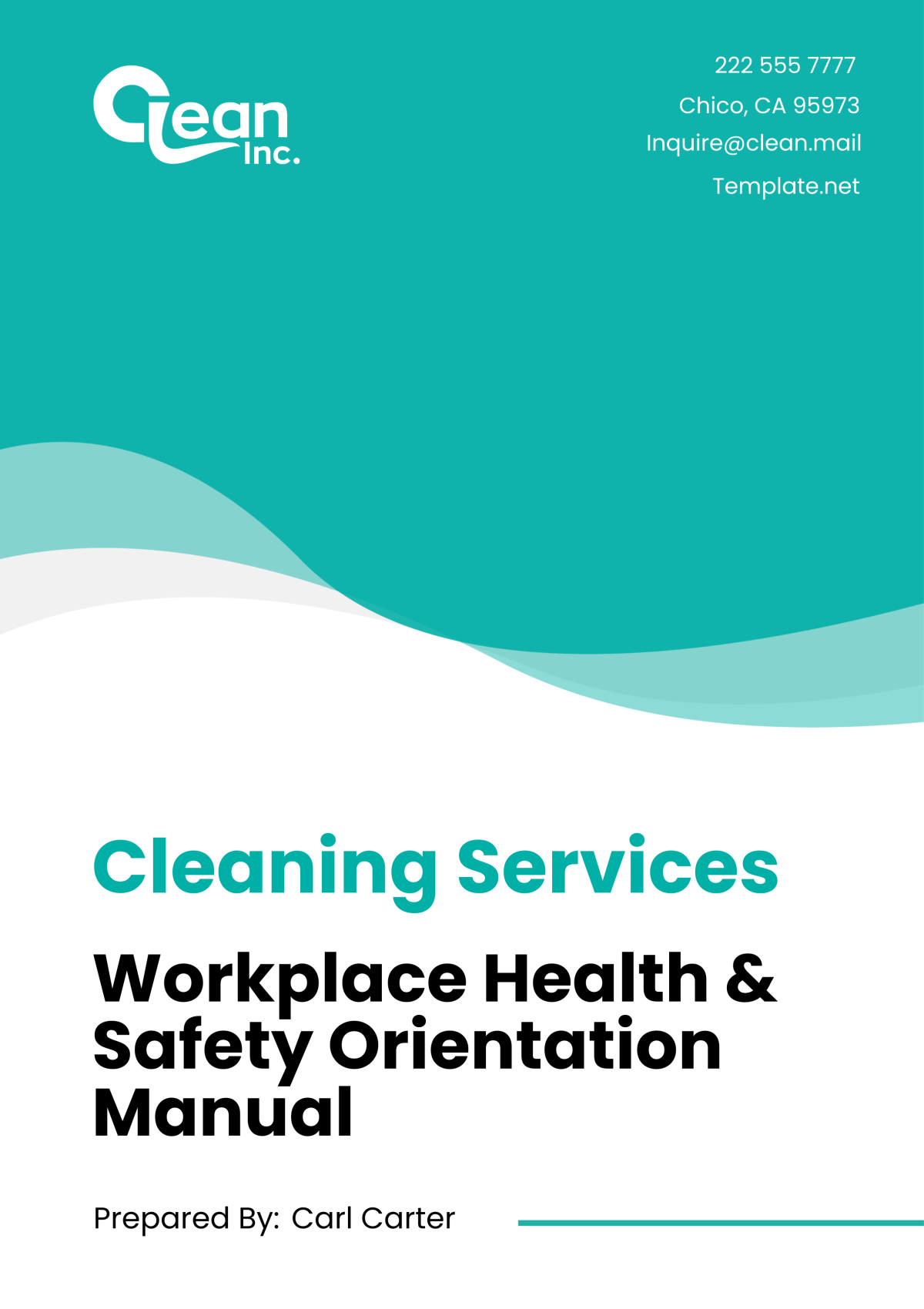
1. Introduction
At [Your Company Name], we believe that the safety and well-being of our employees are of paramount importance. This Cleaning Services Workplace Health & Safety Orientation Manual outlines our methods and practices for upholding health and safety standards, providing a safe working environment, and exercising preventative measures against potential hazards associated with our operations. Our goal is to mitigate risks involved, ensure our employees understand their roles in maintaining safety, and provide robust protocol regulations within our company.
2. Identification and Mitigation of Workplace Hazards
Through the meticulous identification of potential hazards and the implementation of robust mitigation strategies, we empower our team to uphold a workspace that is not only safe but conducive to high levels of productivity and service excellence. Recognizing the unique challenges posed by cleaning operations, this approach underscores our dedication to safeguarding our employees' health and safety, thereby enhancing our overall operational efficiency and maintaining the quality of our services at the highest standards.
A. Hazard Identification
This process involves the continuous monitoring and assessment of the workplace to identify potential safety risks that could harm employees or disrupt operations. It includes regular inspections, employee feedback mechanisms, and the analysis of incident reports to detect emerging hazards promptly.
Activity | Description | Frequency | Responsible Party |
|---|---|---|---|
Workplace Inspections | Comprehensive checks of all work areas to identify potential safety hazards. | Monthly | Safety Officer |
Employee Feedback | A formal mechanism for employees to report perceived hazards or unsafe conditions. | Ongoing | HR Department |
Incident Report Analysis | Reviewing reports of accidents or near-misses to identify patterns or areas of concern. | After each incident | Safety Committee |
B. Risk Assessment and Mitigation Strategies
Upon identifying potential hazards, a thorough risk assessment is conducted to evaluate the severity and likelihood of harm. Based on this assessment, tailored mitigation strategies are developed and implemented to eliminate or reduce the risks to an acceptable level. This may involve engineering controls, administrative changes, or the provision of personal protective equipment (PPE).
Hazard Identified | Risk Assessment Outcome | Mitigation Strategy | Implementation Date |
|---|---|---|---|
Chemical Exposure | High likelihood of skin irritation or respiratory issues. | Provide PPE, introduce safer chemicals. | Immediately upon identification |
Slippery Floors | Moderate risk of falls leading to injury. | Implement use of non-slip mats, enhance cleaning protocols. | Within 1 month of identification |
Electrical Hazards | Low probability but high severity of electric shock. | Regular electrical safety checks, employee training on electrical safety. | Scheduled annually |
C. Training and Awareness
A key component of our hazard mitigation strategy is the ongoing training and education of our staff. This ensures that all team members are aware of the potential hazards associated with their work and understand the measures in place to protect themselves and their colleagues. Regular training sessions, safety briefings, and the dissemination of educational materials keep safety at the forefront of our operations.
Topic | Objective | Method | Frequency | Target Audience |
|---|---|---|---|---|
Chemical Safety | To reduce the risk of harm from chemical use. | In-person training sessions, online modules. | Annually | All cleaning staff |
Emergency Procedures | Ensure staff know how to react in emergencies. | Drill practices, briefing sessions. | Bi-annually | All employees |
PPE Usage | Correct use of Personal Protective Equipment. | Demonstrations, distribution of instructional materials. | Upon induction and yearly refreshers | Employees using PPE |
By systematically addressing each of these critical areas, [Your Company Name] not only adheres to health and safety regulations but also cultivates a safety-conscious culture among its workforce. This comprehensive approach to hazard management ensures that all employees are equipped with the knowledge and tools necessary to perform their duties safely, protecting themselves, their colleagues, and the clients we serve.
3. Use and Maintenance of Cleaning Equipment and Chemicals
This section meticulously details the proper procedures for utilizing and maintaining a variety of cleaning tools and substances, underscoring the importance of regular safety checks and adherence to best practices. By equipping our team with this knowledge, we minimize the risk of accidents and enhance the overall effectiveness of our cleaning operations. Below is a detailed table that provides comprehensive guidelines for the proper use, maintenance, and safety checks of key cleaning equipment and chemicals, embodying our commitment to operational excellence and employee safety.
Equipment/Chemical | Usage Procedure | Maintenance & Safety Checks |
|---|---|---|
Wet and Dry Vacuum Cleaner | Ensure power cords and switches are checked for damage before use. Regularly empty the bag or canister to maintain suction efficiency. | Inspect for physical damage before each use; perform annual servicing to ensure optimal functionality. |
Mops and Buckets | Use with appropriate cleaning solutions; avoid overfilling buckets to prevent spillage. | Mops should be replaced when worn out; buckets should be thoroughly cleaned and dried after each use to prevent mold growth. |
Cleaning Chemicals | Read and follow label instructions carefully before use. Ensure chemicals are only used in well-ventilated areas. | Store chemicals in their original containers in a cool, dry place, away from direct sunlight and heat sources to prevent degradation or dangerous reactions. |
Scrubbing Machines | Operate on flat surfaces; ensure not to overfill the machine with cleaning solution to avoid leakage. | Regularly check machine parts for wear and tear; service the machine as necessary to maintain its efficiency and safety. |
Protective Gloves | Wear when handling chemicals or dealing with sharp objects to protect hands from potential harm. | Inspect gloves for tears or degradation before each use; replace if damaged. Store in a cool, dry place when not in use. |
This structured approach to equipment and chemical use emphasizes the importance of safety and maintenance in preventing workplace hazards. By adhering to these guidelines, [Your Company Name] not only upholds high standards of cleanliness but also ensures the well-being of our employees, maintaining a safe and productive working environment.
4. Emergency Response Procedures
This comprehensive guide outlines our protocols for first aid, evacuation, and accessing emergency contact information, ensuring that every member of our team is equipped with the knowledge and tools needed to respond effectively. By prioritizing clear communication, regular training, and accessibility of safety resources, we aim to maintain a safe working environment for all employees and swiftly address any incidents that may arise.
Procedure | Detail | Implementation | Responsibility | Resources |
|---|---|---|---|---|
First Aid | Familiarity with first aid kit locations and usage. | First aid training sessions for all employees. Placement of kits in easily accessible locations. | Designated Safety Officers | First aid kits, instructional guides. |
Evacuation | Knowledge of clear evacuation routes and procedures. | Regular evacuation drills. Clear signage marking evacuation routes. | Safety Committee | Evacuation maps, drill schedules. |
Emergency Contacts | Accessibility of essential health and safety contacts. | Maintaining an updated list of contacts. Ensuring all personnel know how to access this information. | HR Department | Contact list available via intranet, physical postings in common areas. |
By implementing these emergency response procedures, [Your Company Name] reinforces its commitment to employee safety and the effective management of potential workplace emergencies. Our proactive approach ensures that all team members are prepared, informed, and confident in their ability to respond to emergencies, safeguarding both personnel and property.
5. Ongoing Safety Training & Responsibilities
By acknowledging the dynamic nature of safety regulations and the varying needs of our workforce, this detailed framework establishes a methodical approach to safety education and assigns explicit responsibilities. Our objective is to guarantee that every team member is fully informed about their safety obligations and possesses the most up-to-date knowledge and skills for safe and proficient task execution.
Training Program | Objective | Frequency | Responsible Party | Target Audience |
|---|---|---|---|---|
General Safety Induction | To familiarize new hires with workplace safety policies, emergency procedures, and their personal safety responsibilities. | Upon hiring | HR Department | New Employees |
Hazardous Material Handling | To educate employees on the safe handling, storage, and disposal of hazardous materials. | Annually | Safety Officer | Staff handling hazardous materials |
Ergonomics and Injury Prevention | To prevent workplace injuries by teaching proper ergonomics and manual handling techniques. | Bi-annually | Health and Safety Committee | All employees |
Fire Safety Training | To ensure employees know how to respond in the event of a fire, including the use of fire extinguishers and evacuation procedures. | Annually | Fire Safety Manager | All employees |
Equipment Operation and Maintenance | To train employees on the safe operation and routine maintenance of cleaning equipment to prevent accidents. | As needed (when new equipment is introduced or procedures change) | Equipment Supervisors | Employees operating machinery |
Safety Responsibility | Role Description | Assigned To |
|---|---|---|
Safety Policy Oversight | Ensures that all safety policies are up-to-date and in compliance with national safety regulations. | Safety Committee |
Safety Training Coordination | Organizes and schedules all safety training programs, tracks participation, and evaluates effectiveness. | HR Department |
Emergency Preparedness | Manages the development and implementation of emergency response plans, including regular drills. | Fire Safety Manager |
Hazard Identification and Mitigation | Conducts regular inspections to identify potential hazards and coordinates efforts to mitigate identified risks. | Safety Officer |
Incident Reporting and Investigation | Oversees the process for reporting and investigating workplace incidents to identify root causes and prevent recurrence. | Health and Safety Committee |
6. Incident Reporting & Safety Audits
By instituting a rigorous protocol for the immediate reporting of safety incidents and conducting thorough safety audits, we aim to identify and address potential hazards proactively. This dual approach not only facilitates a rapid response to incidents but also contributes to the development of a safer workplace environment, ultimately fostering a culture where safety is paramount and every team member is an active participant in maintaining high safety standards.
Incident Reporting
Protocol: Establishes the process for promptly reporting any safety-related incidents to ensure timely intervention and mitigation.
Objective: To document and analyze incidents to prevent recurrence, fostering an environment of transparency and continuous learning.
Procedure: Employees are trained to report incidents using a standardized form, available both in print and electronically, ensuring that management is immediately informed.
Safety Audits
Frequency: Regularly scheduled audits to systematically review and evaluate the effectiveness of current safety protocols and identify areas for improvement.
Scope: Audits encompass all aspects of workplace safety, from equipment and chemical use to emergency response procedures and personal protective equipment compliance.
Outcome: Audit findings lead to actionable recommendations for enhancing safety measures, which are then implemented to strengthen overall safety management.
Continuous Improvement
Strategy: Leveraging insights from incident reports and safety audits to inform ongoing safety training and policy updates.
Impact: Ensures that safety practices evolve in alignment with the latest industry standards and regulatory requirements, enhancing the safety and well-being of all employees.
Engagement: Encourages active participation from all staff in safety initiatives, reinforcing a collective responsibility towards maintaining a safe working environment.
Through these structured processes, [Your Company Name] demonstrates a proactive stance on workplace safety, emphasizing the importance of swift incident reporting, comprehensive safety audits, and a commitment to continuous improvement in our safety practices.
7. Conclusion
[Your Company Name] reaffirms its unwavering commitment to establishing and maintaining a workplace that prioritizes the safety and health of every team member. By adhering to the meticulously outlined guidelines within this manual, we collectively embark on a mission to significantly reduce the incidence of workplace accidents and enhance the well-being of our workforce. Our dedication to this cause is not merely a compliance measure but a reflection of our core values, emphasizing the integral role of safety and health in achieving operational excellence and fostering a positive workplace culture.
Commitment to Safety
Our pledge extends beyond the pages of this manual; it is embedded in the daily operations and the very ethos of [Your Company Name]. By actively participating in safety training, adhering to best practices, and embracing a culture of vigilance and responsibility, we ensure that safety is always at the forefront of our actions and decisions.
Collective Responsibility
Safety is a shared endeavor, necessitating the involvement and commitment of every employee. From management to frontline staff, we each hold a vital role in safeguarding our environment and each other. By working together and supporting one another in these efforts, we strengthen our collective capacity to prevent accidents and promote a healthy workplace.
Continuous Improvement
Recognizing that the landscape of workplace safety is ever-evolving, [Your Company Name] is dedicated to ongoing improvement and adaptation of our safety practices. Through regular reviews, feedback mechanisms, and updates to our safety protocols, we remain responsive to new challenges and committed to upholding the highest standards of workplace health and safety.
Let this manual serve as a foundation upon which we build a safer, healthier, and more productive future at [Your Company Name]. Together, we can achieve our shared goal of minimizing risks and nurturing an environment where every employee thrives.
- 100% Customizable, free editor
- Access 1 Million+ Templates, photo’s & graphics
- Download or share as a template
- Click and replace photos, graphics, text, backgrounds
- Resize, crop, AI write & more
- Access advanced editor
Template.net proudly presents its Cleaning Services Workplace Health & Safety Orientation Manual Template. This editable, customizable document allows effortless integration of your unique content, editable in our Ai Editor Tool. Enhance your marketing strategies with our advanced templates, tailored specifically for industry professionals. Discover the ease of conveying safety protocols effectively, whilst saving time and resources. Let us enhance your professional workflow today.
